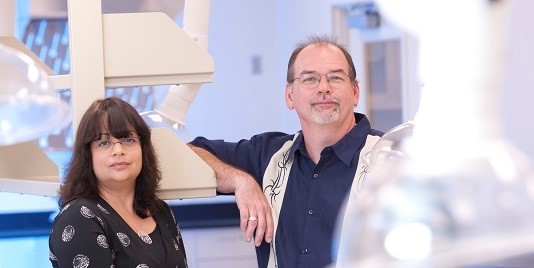Research Outside the Lab
 For most people, the word “research” conjures up images of serious-looking scientists in white coats, beakers filled with colorful liquids, microscopes and cluttered laboratories.
For most people, the word “research” conjures up images of serious-looking scientists in white coats, beakers filled with colorful liquids, microscopes and cluttered laboratories.
But consider this image: A mother takes her daughter to the pediatrician after her child bangs her head in a collision during a youth soccer game. The physician is concerned that the child has suffered a concussion, and there’s a question about what course of action to take.
When will it be safe for this little girl to resume her normal activities? She wants to play in tomorrow’s big game, but should the doctor say it’s OK?
Diagnosing head injuries, unfortunately, is an inexact science. The same blow to the head might cause drastically different outcomes in two people who otherwise appear very similar. Also, there is not enough good research about what happens inside the brain when it’s exposed to a concussive blow.
That’s where the College of Medicine’s unique educational model and burgeoning research program intersect.
Yes, there is plenty of groundbreaking research taking place in traditional research laboratories at the main campus. Soon, though, there will be groundbreaking College of Medicine research taking place outside the lab, too, in communities across Florida.
To educate and train its third- and fourth-year medical students, Florida State employs more than 1,700 physicians statewide. The idea is to send students out into Florida’s communities, where they will get one-on-one training and will see the kinds of cases, and patients, they will most often encounter once they become practicing physicians.
Sounds simple enough, but it’s a drastic departure from conventional medical education. The community-based approach is producing remarkable outcomes and there’s no reason to think a community-oriented research initiative won’t do the same.
Altogether, physicians who teach our medical students take care of more than 2.5 million patients. Their participation in the new FSU Clinical Research Network will provide opportunities for including data from healthy patients, as well as those suffering from disease or injury.
For example, researchers will have the opportunity to collect baseline data that will allow a pediatrician to quickly compare how a child’s brain functions in performing basic tasks both before and after suffering a concussion. That will facilitate a more informed diagnosis.
“The relationships we’ve built with physicians across the state through our education program will be invaluable toward establishing the FSU Clinical Research Network,” said Dr. Michael Muszynski, dean of the Orlando campus and regional campus dean for research at the College of Medicine.
At the main campus, a new clinical translational research laboratory has just been completed. The lab will serve as the central collecting point for analysis, storage and sharing of information.
The college recently welcomed Roger Mercer, Ph.D., as director of the translational science laboratory, and Jessica De Leon, Ph.D., as clinical research projects director.
In November, the College of Medicine and the University of Florida jointly received a $600,000 grant from the Board of Governors of the State University System to strengthen research, education and service efforts in public health and to boost economic growth.
The funds will support the UF-FSU Community Research Collaborative Program, with initial efforts involving the assessment and monitoring of mild traumatic brain injury and of health risk behaviors among youngsters in Florida.
“This project, and our broader initiative to engage physicians statewide in research that takes us directly into the community, will serve to improve health care outcomes for patients,” said Myra Hurt, senior associate dean for research and graduate programs at the College of Medicine.
“Ultimately our aim is to perform patient-oriented research services that help us better understand root causes of disease, while becoming more effective in prevention, diagnosis and treatment.”
So while scientists (some of them in white coats) will continue to diligently pursue answers in the laboratory, taking research out to the doctor’s office will offer a promising new approach.
It doesn’t guarantee that children with head injuries will get back to playing soccer any sooner. But it raises hope that the doctors who treat them will be better equipped to make decisions that lead to the best possible health-care outcomes.
